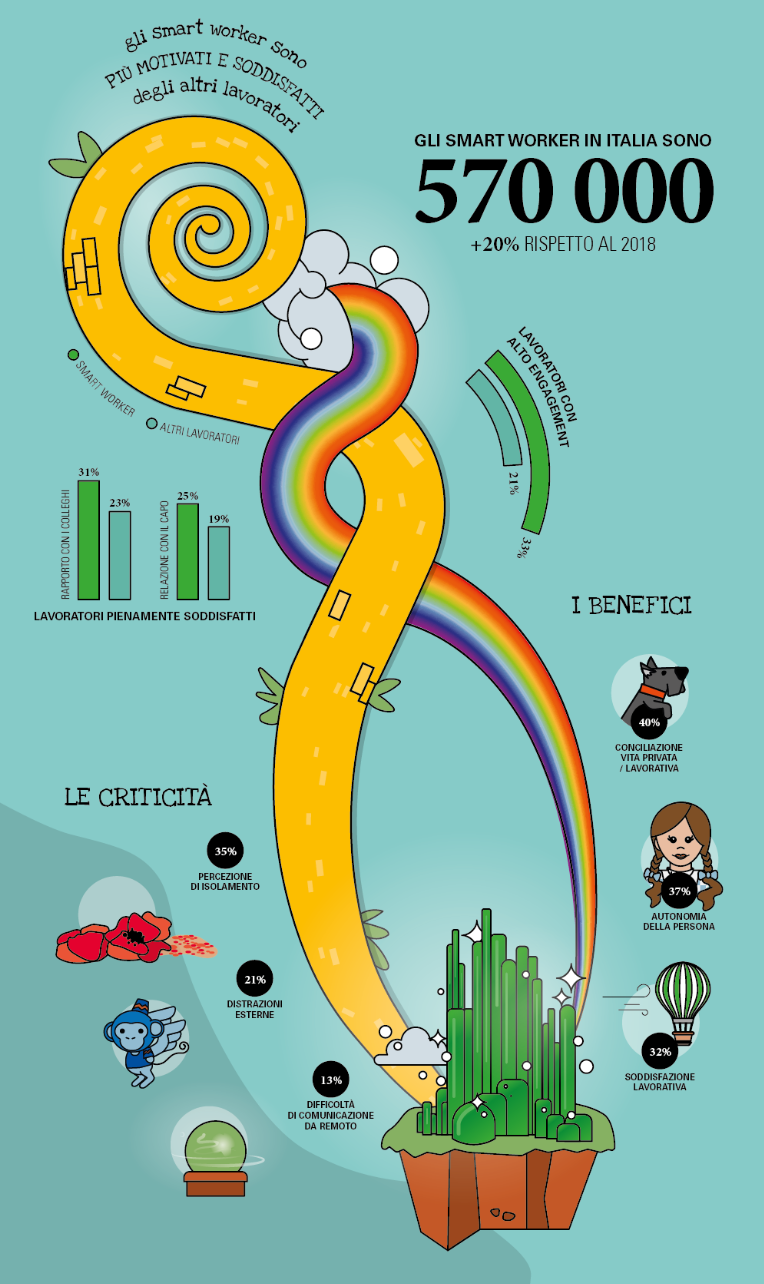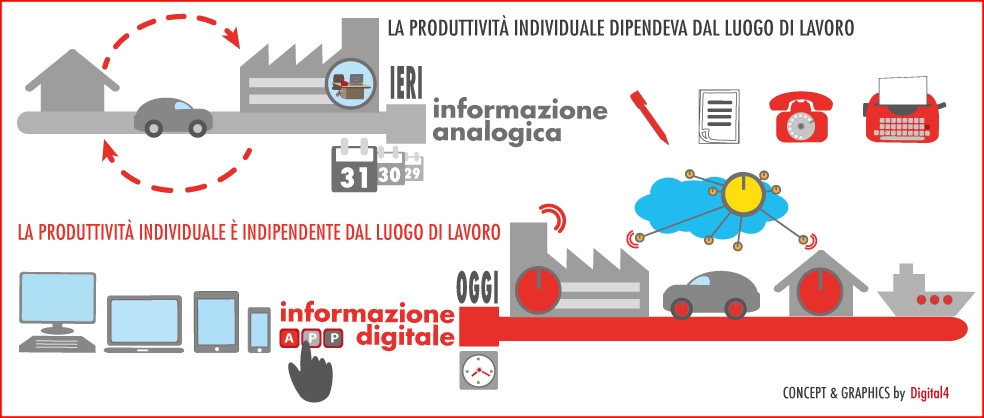
Smart working: urban resilience tool
On February 21, Coronavirus crossed the borders of our country and Smart Working became the measure adopted by many Italian companies in the areas affected by the epidemic.
An initiative designed to try to stem the contagion with social responsibility, while continuing its activities, and which in fact represents an unexpected acceleration of a process already underway for some time.
Numerous companies have made available solutions and services, also offering simplified and easy-to-use tools to make their introduction more immediate.
The opportunity is to experience this particular situation as an opportunity to experiment with new working methods, new tools and digital channels.

Image: Freepik.com
An initiative designed to try to stem the contagion with social responsibility, while continuing its activities, and which in fact represents an unexpected acceleration of a process already underway for some time.
Numerous companies have made available solutions and services, also offering simplified and easy-to-use tools to make their introduction more immediate.
The opportunity is to experience this particular situation as an opportunity to experiment with new working methods, new tools and digital channels.
More generally, an opportunity to enable the development processes of an intelligent and responsible city with a view to environmental, functional, economic, social and civil sustainability.
If a Smart City is the set of strategies aimed at relating material infrastructures to smart cities thanks to the use of new technologies, in order to improve the quality of life, it is its characteristic task to use smartness tools in a widespread and inclusive.
There are numerous benefits that the smart city achieves by enabling the smart working organizational model: it reduces congestion, consumption and environmental impact; rebalances the distribution of services and infrastructures between center and periphery; increases working well-being in terms of access to work and enhancement of time.
Smart City – People Technology Materials.
Smart Working is People. Intended as a way of working that allows the best balance between quality of life and individual productivity.
Smart Working is Technology. Intended as the result of a wise use of Digital Transformation to support strategic approaches that focus on integration and collaboration
Smart Working is Materials. Because the application of advanced technologies serves to connect people to material infrastructures, to trigger business processes.
Data and analysis
 | |
Image: Osservatori Digital Innovation, School of Management, Politecnico di Milano |
The Politecnico di Milano Observatory defines Smart Working as “a new managerial philosophy based on giving people back flexibility and autonomy in choosing spaces, times and tools to be used in the face of greater responsibility for results“.
Law 81/2017 governing agile work was introduced in June 2017, placing it in a regulatory framework and providing the legal basis for its application also in the public sector. And since then, the Smart Working Observatory of the Milan Polytechnic has been monitoring the growth in attention towards the smart way of working.
According to the Observatory data, in 2019 the percentage of large companies that started Smart Working projects within it is 58%, slightly up on 56% in 2018.
To these percentages must be added 7% of companies which has already activated informal initiatives and a 5% which plans to do so in the next twelve months.
Among SMEs there is an increase in the spread of Smart Working: structured projects go from 8% last year to 12% today, informal ones from 16% to 18%, but the percentage of selfless companies also increases worryingly to the topic (from 38% to 51%).
The most significant growth is among the Public Administrations: in one year the structured projects of Smart Working double in the public sector and the most advanced are the large PAs, which in 42% of cases have already introduced structured initiatives and in the 7% have activated informal initiatives. Despite these encouraging data, the delay remains evident, with almost 4 out of 10 PAs that do not have Smart Working projects.
There are now around 570 thousand smart workers, an increase of 20% compared to 2018, and on average they have a much higher degree of satisfaction and involvement in their work than those who work in the traditional way.
The main problems encountered by the managers are identified in the difficulty in managing emergencies, use of technologies and planning of activities. Those encountered by workers: the perception of isolation, eternal distractions, problems of communication and virtual collaboration and the technological barrier.
Smart Working is made possible by digital technologies that allow you to choose where and when to work, both inside and outside the organization. Technologies that support remote work are already widespread.
According to the findings of the Smart Working Observatory of the Polytechnic of Milan, the solutions with the greatest penetration are those to support the security and accessibility of data remotely and from different devices (95%), followed by Mobility initiatives, which provide for the presence mobile devices and mobile business apps (82%) and Social Collaboration services (61%).
In fact, Italians today communicate through a plurality of proprietary and corporate devices (not surprisingly, since 2011 more smartphones and tablets have been sold than PCs): Bring Your Own Device (BYOD), once opposed to in the company, has become the driver main of agile work.
In terms of technological equipment, the standard one to allow remote working generally consists of a laptop PC, VPN and social collaboration services. Only when necessary are mobile devices such as smartphones and tablets introduced.
In a nutshell, Smart Working represents a new dimension of work that takes advantage of Mobility, Unified Communication & Collaboration and social computing and promotes individual productivity and operational continuity of the user, and therefore of the business.
A cultural change that leverages a new concept of the relationship between individual and company.

Image: Digital4
And people today are ready for change, also thanks to the diffusion of the smartphone that allows you to communicate, work, stay connected on the move. The level of availability for digital interaction has triggered a new spontaneous learning curve for people, who today arrive at the company with a level of preparation and availability for innovation that was once unimaginable.
But remember that the benefits are not just for businesses and workers: a single day of remote working per week can save on average 40 hours of travel per year and the environment, on the other hand, leads to an equal reduction in emissions to 135 kilograms of CO2 per year, considering that on average people travel about 40 kilometers to go to work and assuming that they do a day of work at home remotely.
One last consideration, no less important and particularly current: Smart working is a great tool for urban resilience, possessing the ability to react positively to calamitous or catastrophic events.



